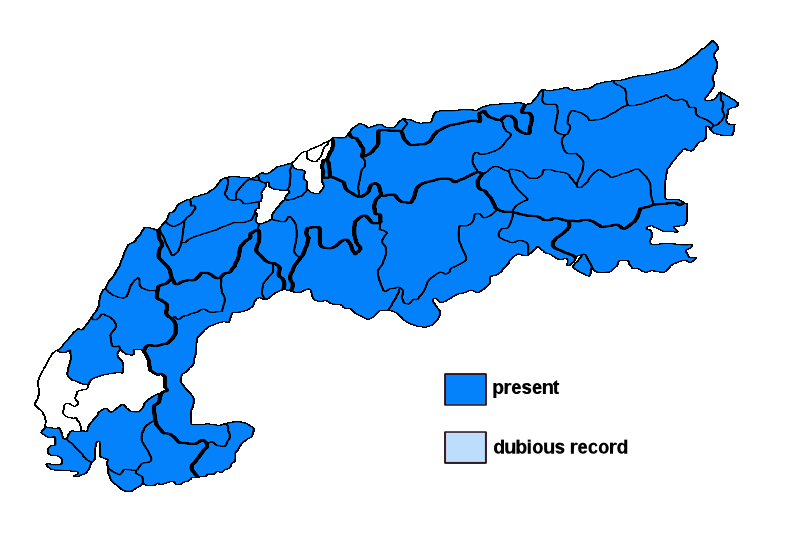Lecania cyrtella (Ach.) Th. Fr.
Syn.: Biatora anomala Fr., Biatora cyrtella (Ach.) W. Mann, ?Biatora microcyrtella Anzi, Biatorina cyrtella (Ach.) A. Massal., Biatorina heterobaphia Anzi, Bilimbia anomala (Fr.) Mudd, Catillaria heterobaphia (Anzi) Lettau, Lecanora cyrtella (Ach.) Röhl., Lecidea austriaca Zahlbr., Lecidea cyrtella Ach., Lecidea subalpina Zahlbr. non Stizenb., Patellaria cyrtella (Ach.) Müll. Arg., Sporoblastia cyrtella (Ach.) Trevis.
Lichenised.
Substrate: bark, lignum
Altitudinal range: from the mesomediterranean belt (potential vegetation: evergreen broad-leaved forests dominated by Quercus ilex) to the alpine belt (potential vegetation: treeless Alpine grasslands and tundras, to the lower limit of perennial snow and the equilibrium line of glaciers)
Note: a holarctic lichen found on the base-rich bark of isolated trees, e.g. on Populus, Juglans, Fraxinus, Sambucus, mostly in Xanthorion-communities; some earlier records could refer to L. cyrtellina and L. sambucina; widespread throughout the Alps.
Austria: Vorarlberg; Tirol; Salzburg; Kärnten; Steiermark; Oberösterreich; Niederösterreich (incl. Wien); Burgenland; Germany: Oberbayern; Schwaben; Switzerland: Bern; Fribourg; Glarus; Graubünden; Luzern; Schwyz; Ticino; Unterwalden; Vaud; Valais; France: Alpes-de-Haute-Provence; Alpes-Maritimes; Isère; Savoie; Haute-Savoie; Vaucluse; Var; Italy: Friuli; Veneto; Trentino Alto Adige; Lombardia; Piemonte; Valle d'Aosta; Liguria; Slovenia: Alpine and Pre-Alpine Slovenia; Trnovsky Gozd; Liechtenstein





